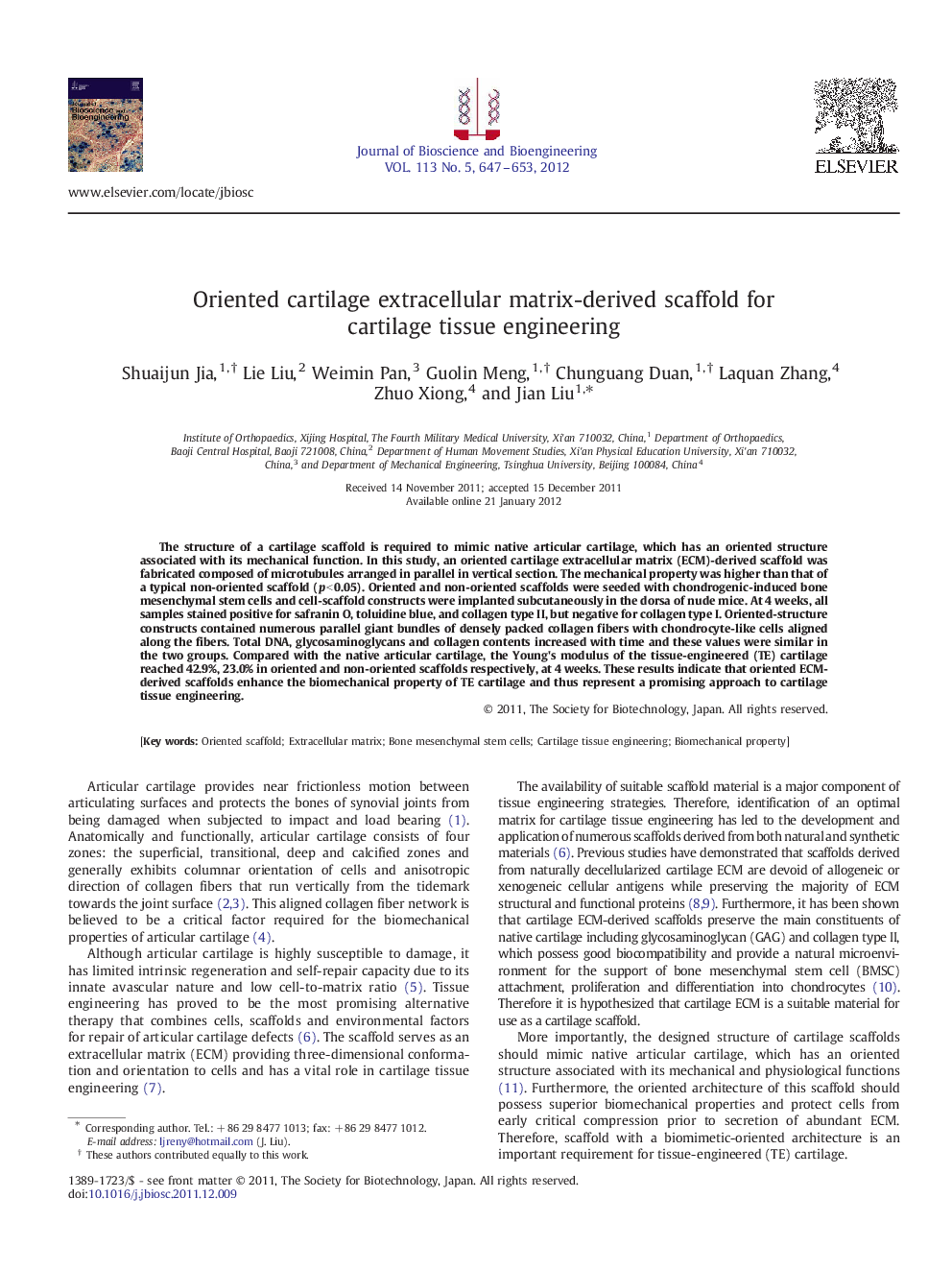| Article ID | Journal | Published Year | Pages | File Type |
|---|---|---|---|---|
| 21150 | Journal of Bioscience and Bioengineering | 2012 | 7 Pages |
The structure of a cartilage scaffold is required to mimic native articular cartilage, which has an oriented structure associated with its mechanical function. In this study, an oriented cartilage extracellular matrix (ECM)-derived scaffold was fabricated composed of microtubules arranged in parallel in vertical section. The mechanical property was higher than that of a typical non-oriented scaffold (p < 0.05). Oriented and non-oriented scaffolds were seeded with chondrogenic-induced bone mesenchymal stem cells and cell-scaffold constructs were implanted subcutaneously in the dorsa of nude mice. At 4 weeks, all samples stained positive for safranin O, toluidine blue, and collagen type II, but negative for collagen type I. Oriented-structure constructs contained numerous parallel giant bundles of densely packed collagen fibers with chondrocyte-like cells aligned along the fibers. Total DNA, glycosaminoglycans and collagen contents increased with time and these values were similar in the two groups. Compared with the native articular cartilage, the Young's modulus of the tissue-engineered (TE) cartilage reached 42.9%, 23.0% in oriented and non-oriented scaffolds respectively, at 4 weeks. These results indicate that oriented ECM-derived scaffolds enhance the biomechanical property of TE cartilage and thus represent a promising approach to cartilage tissue engineering.
